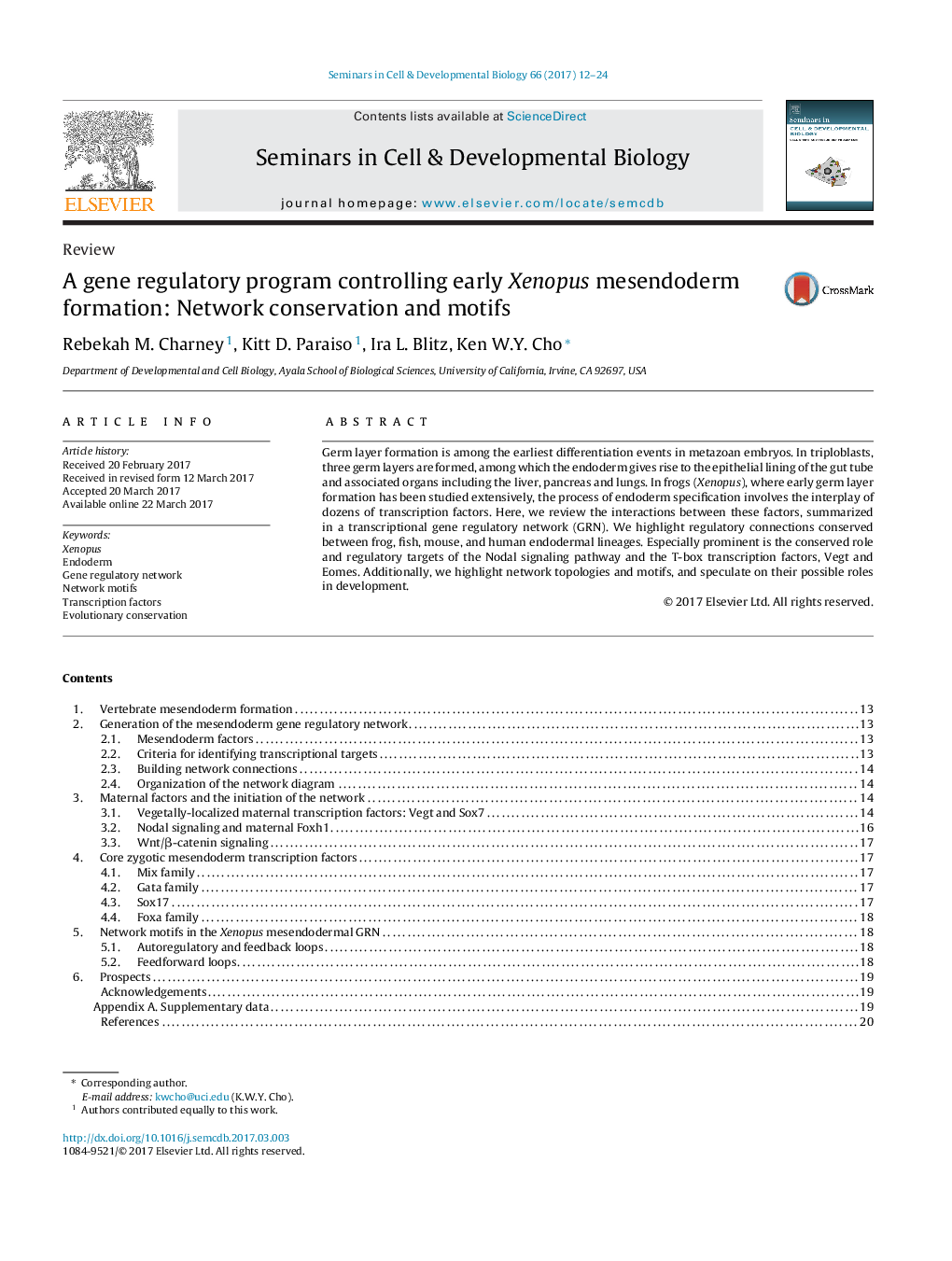| Article ID | Journal | Published Year | Pages | File Type |
|---|---|---|---|---|
| 5534878 | Seminars in Cell & Developmental Biology | 2017 | 13 Pages |
â¢Comprehensive Xenopus mesendoderm gene regulatory network (GRN).â¢Conserved regulatory connections in frog, fish, mouse, and human endoderm are revealed.â¢Coherent feedforward loops are the most common network motif in the GRN.
Germ layer formation is among the earliest differentiation events in metazoan embryos. In triploblasts, three germ layers are formed, among which the endoderm gives rise to the epithelial lining of the gut tube and associated organs including the liver, pancreas and lungs. In frogs (Xenopus), where early germ layer formation has been studied extensively, the process of endoderm specification involves the interplay of dozens of transcription factors. Here, we review the interactions between these factors, summarized in a transcriptional gene regulatory network (GRN). We highlight regulatory connections conserved between frog, fish, mouse, and human endodermal lineages. Especially prominent is the conserved role and regulatory targets of the Nodal signaling pathway and the T-box transcription factors, Vegt and Eomes. Additionally, we highlight network topologies and motifs, and speculate on their possible roles in development.
